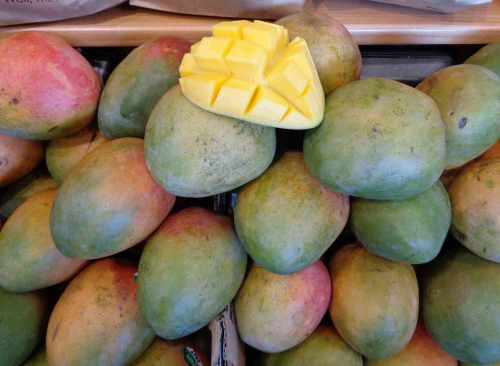This chutney bears little resemblance to the chutneys one buys in jars. It is fresher, brighter, and less acidic. It is both authentic and absolutely delicious. It makes a nice accompaniment to Indian food, but it is also great with a simple roasted chicken, or even to spark up some cottage cheese. Enjoy.
Aam Chatni
(Mango Chutney)
1 Tbs. vegetable oil
1 tsp. cumin seeds
2-inch piece of fresh ginger, peeled and cut into thin slivers
1 clove garlic, minced
2 medium-ripe mangoes (about 3/4-lb. each), peeled and cut into 1/2-inch cubes
1 tsp. dried red pepper flakes
1/2 tsp. cinnamon
Dash of cloves
2 Tbs. fresh lime juice
1/3 cup sugar
1/2 tsp. salt
Heat the oil in a small saucepan over medium-high heat. When oil is hot, add cumin seeds and fry, stirring constantly, until lightly colored, about 30 seconds. Add the ginger and garlic and fry, stirring, for another 30 seconds. Add the mango, pepper flakes, cinnamon, cloves, lime juice, sugar, and salt. Mix thoroughly and reduce heat to low. Cook, stirring occasionally, until the mango softens and the liquid begins to thicken, about 15-20 minutes. Can be served warm or cold. Can be kept in the refrigerator, in a closed container, for up to 6 days. Makes about 2 cups.
Note: Mangoes have a single large, flat seed, to which the flesh sticks tenaciously. The easiest way to cut up a mango is to slice from the top, find that seed with your knife blade, and let the blade follow the flat contour of the seed. That way, you get nice, large “fillets” of mango. To get chunks of mango, simply slice through the flesh, but not the skin, in a checkerboard pattern, and then cut the flesh away from the skin. (Don’t peel the mango before gutting the flesh away from the seed, because the fruit is very slippery, and you’re more likely to get cut.)






